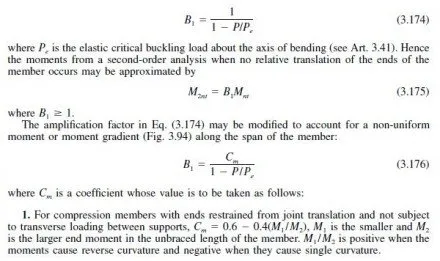Sometimes, unnecessary problems develop during construction of a bridge that could have easily been prevented with an appropriate design. Also, the construction procedures used by a contractor may lock in stresses unaccounted for in design that will adversely influence the service life of the bridge. Two specific areas where difficulties have occurred have been in construction of curved girder bridges and in deck-concrete placing sequences, especially when the bridge has a large skew.
As part of bridge design, the designers should assume an erection and concrete placing sequence and check for construction stresses. The assumed methods should be included on the contract plans for the contractors information, with the understanding that deviations will be accepted subject to the ability of the contractor to demonstrate that no adverse stresses will result from the proposed method.
The AASHTO LRFD specifications, to ensure that designers properly consider constructibility, specify that bridges be designed so that fabrication and erection can be performed without undue difficulty or distress and that effects of locked-in construction forces are within tolerable limits. When the method of construction of a bridge is not self-evident, or could induce unacceptable locked-in stresses, the designer should propose at least one feasible method on the plans. If the design requires some strengthening or temporary bracing or support during erection by the selected method, the plans should indicate the need thereof.
To provide for the above, designers should check for what is essentially a construction limit state. For the purpose, the following factored load should be used:
![]()
where D is the dead load, L is the live load, and W is the wind load. This concept should be applied to all designs, regardless of which specification is used.



